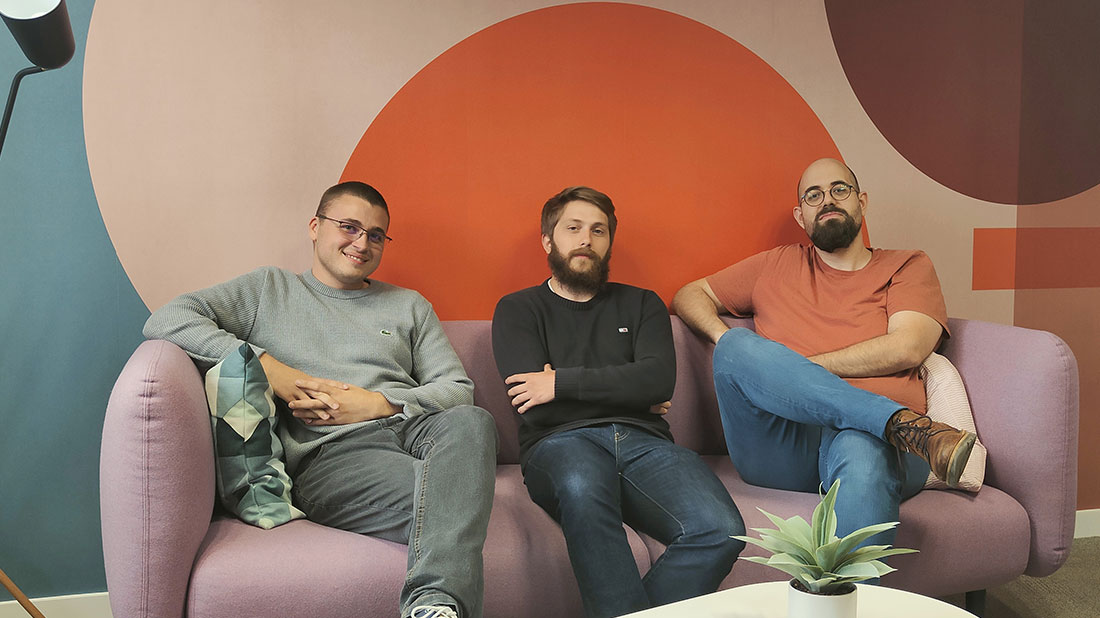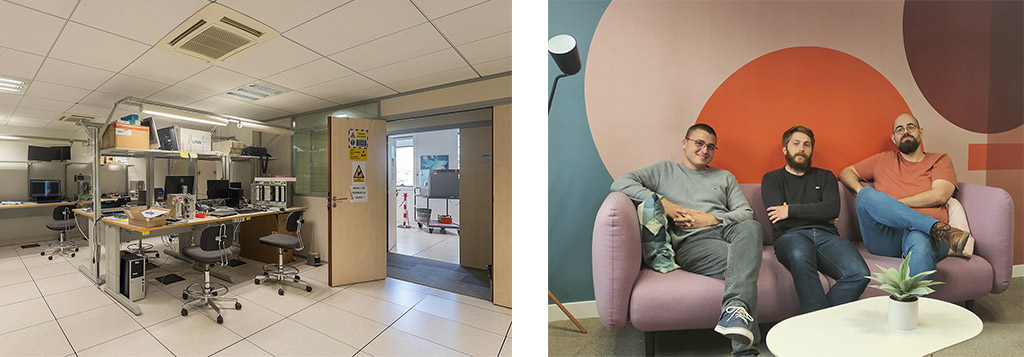
Panduza, for a connected lab 2.0
The Panduza open source project aims to promote a software ecosystem that will eventually drive hardware in electronics laboratories. Let’s meet with Xavier, Bryan, and Antoine, very happy to have been selected at the end of the first phase of the “Into the Lab #1” call for projects.
Q: How do you define Panduza?
Panduza is an open-source project that aims to standardize the interfaces of electronic devices via the MQTT protocol. As a reminder, MQTT, also open-source, is already used in the field of home automation, both at home and in the business domain.
We want to facilitate the emergence of a better software ecosystem (test frameworks, a control application, a control web app, etc.) in order to be able to remotely control the equipment of an electronics laboratory.
Q: Which need does Panduza address?
Rolling out a test plan in a lab is often long, tedious, more or less reproducible over time and the operations are mostly done by hand, which increases the risk of errors. First of all, we want to make it possible to automate test plans.
Then, the equipment present in the labs is expensive (customer boards, ovens, etc.) and the people with the skills to use it are not always present. With remote control, we could pool the use of this material.
Let’s take the example of a multi-design-center project at ELSYS Design: a specialist could set up the test bench in the Cachan lab, and the teams in Rennes and Toulouse could launch their tests remotely. Currently, it is necessary either to duplicate the test bench, or transfer it, or have the engineers travel between design centers.
Finally, if a critical test fails at 9 p.m., we could receive an alert and restart it remotely from home without having to wait until the next morning. A bit like an IT manager who can connect to the network at any time.
Q: Is there an impact from a security point of view?
MQTT, on which Panduza is based, is an open-source messaging protocol that provides non-permanent communications between devices by transporting their messages. This protocol implements a security layer.
In addition, a company’s network also has secure access protocols.
Panduza fits into this environment.
Q: Are there competing solutions on the market for test automation?
First of all, electronic equipment manufacturers are making it increasingly possible to control their devices, unlike twenty years ago when the control interface did not exist.
Nevertheless, if we take five oscilloscopes on the market, we will have five different methods, with often poor documentation to set up the functionality.
If we now look specifically at the test bench market, only LabView offers test control solutions in its laboratories, but the cost of licenses is very high (several tens of thousands of Euros), the environment is closed and the number of compatible devices is limited.
To sum up, testing is a critical need that concerns almost everyone in the embedded world.
Costs only increase as test plans get longer every year. However, few companies have the means to pay for licenses worth tens of thousands of Euros to automate them. We are talking about start-ups of course, but not only: at ELSYS Design, for example, LabView services are invoiced separately and not all of our customers validate them because of the license cost.
Q: What solution do you propose?
Panduza’s vision is to realize an API in order to foster the creation of a hardware-independent software ecosystem. We want to develop the software bricks below.
Q: What will be the main difficulty?
There are a lot of devices to address, so a lot of resources will be needed. Hence our desire to make the solution open source so that the community can participate in the effort.
How to motivate it? The project must be interesting and meet real needs, there must also be a strong impetus from the Panduza team at the start so that people can use the core of the software as it is, and then only need to carry out additional developments.
The main challenge lies in the start.
Q: Precisely, what will be your starting point to motivate the community to follow you?
Thanks to ADVANS Lab, we will be able to develop an application allowing the testing of boards via BoundaryScan which will be independent of the JTAG and I/O probes used.
As a reminder, BoundaryScan makes it possible to electrically test electronic boards that leave the factory. We connect in JTAG to the processor in order to control the I/O and, thanks to the schematics of the card, we can create an automated test plan to activate the different tracks of the board. Currently, this BoundaryScan is only accessible from €15,000; it is very rarely done for small or medium series.
With our first interns, we want to create open-source software compatible with any JTAG to perform this BoundaryScan, a fairly basic operation.
So we could test the boards without license cost and extra hardware. It could become an added value for our customers.
Q: And what about your business model?
We imagine a business model close to Linux: a free core, the community that enriches it, and then paid services made by ELSYS Design, or even specific software solutions (e.g. real-time).
Embedded needs are constantly evolving: new protocols and new devices with different ways of controlling them. So without a community, it can’t work.
The strength of a model like Linux is that as soon as a new need arises, someone develops the functionality and offers it to the community.
A bit like Linux, we imagine owning the Panduza foundation in the open-source sense of the term. Panduza would guide the technical roadmap of the main branch of the project and ELSYS Design could then sell services around it.
Q: How did the idea come to you?
During a project, we had great difficulty controlling some I/O, SPI, and I2C of a board.
We delivered our code to the client, but it turned out that they were using different probes, so the scripts had to be reprogrammed. As a result, the customer was dissatisfied, there was double work, and an additional cost for ELSYS Design and the customer.
More generally, the projects are becoming more and more complex, and the test procedures are longer and longer, so we would like to automate them.
Q: Are we talking of a project already in progress?
Yes, as we have already developed elements that allow us to control I/O and power supplies from the Cachan lab.
We believe that we have reached a mature architecture of the protocol: the “engine” is therefore created, it remains to code the other elements. And that’s when we learned about the launch of the “Into the Lab” call for projects.
Q: You have passed the first selection step. What is your reaction?
We are super happy! It is a form of recognition that reinforces our belief that our idea is valid. It is an additional motivational engine that gives us confidence.
Q: Last question: why Panduza and this funny logo?
First of all, the idea of the project is to pilot a large panel of devices, it made us think of a kind of jellyfish.
Then there is already an open source project for all animals in the animal kingdom. As Bryan loves pandas, the name Panduza appeared, a jellyfish/panda mix!
Finally, Antoine’s brother, who is a graphic designer, designed this logo for us 😊.
